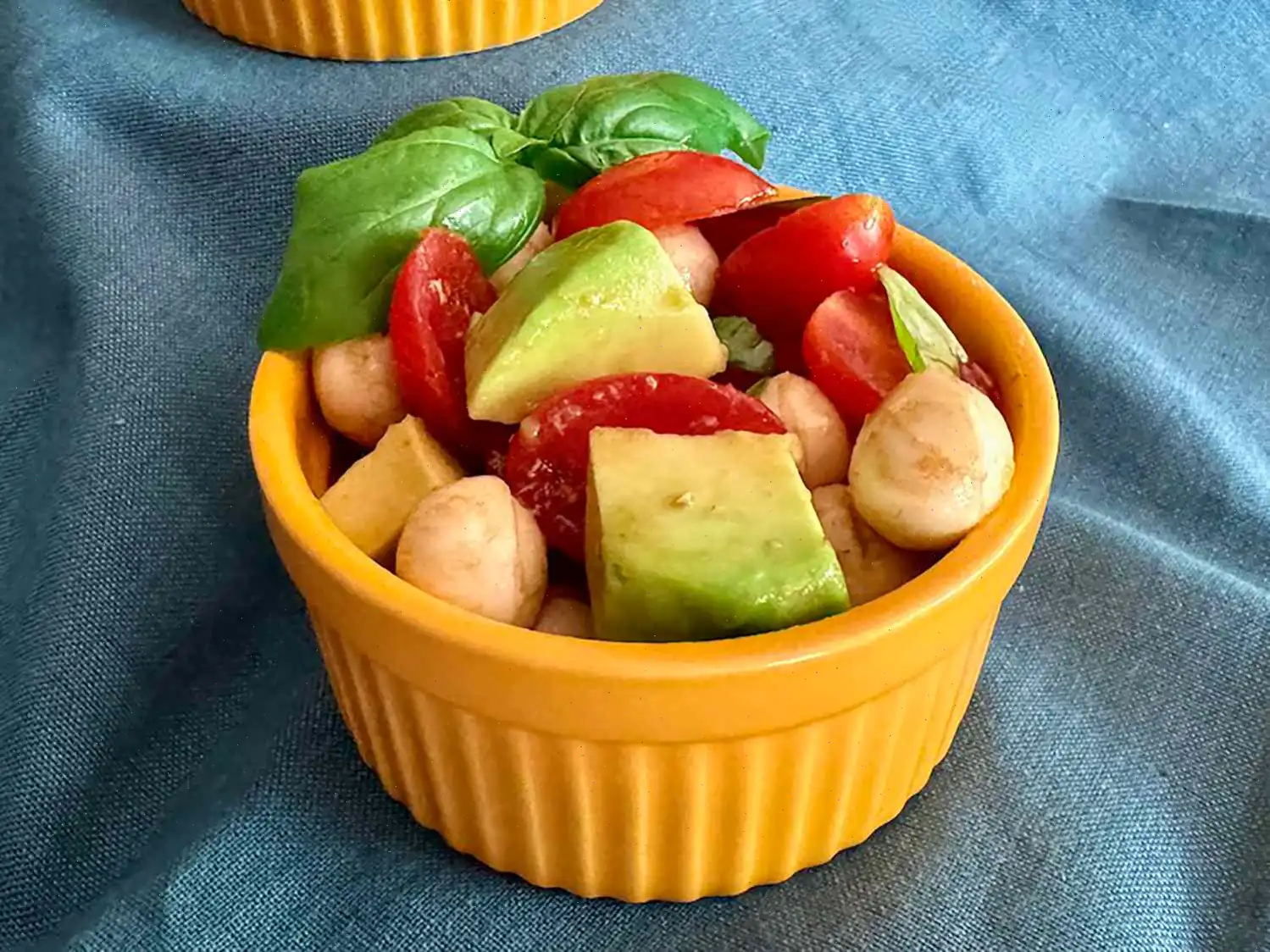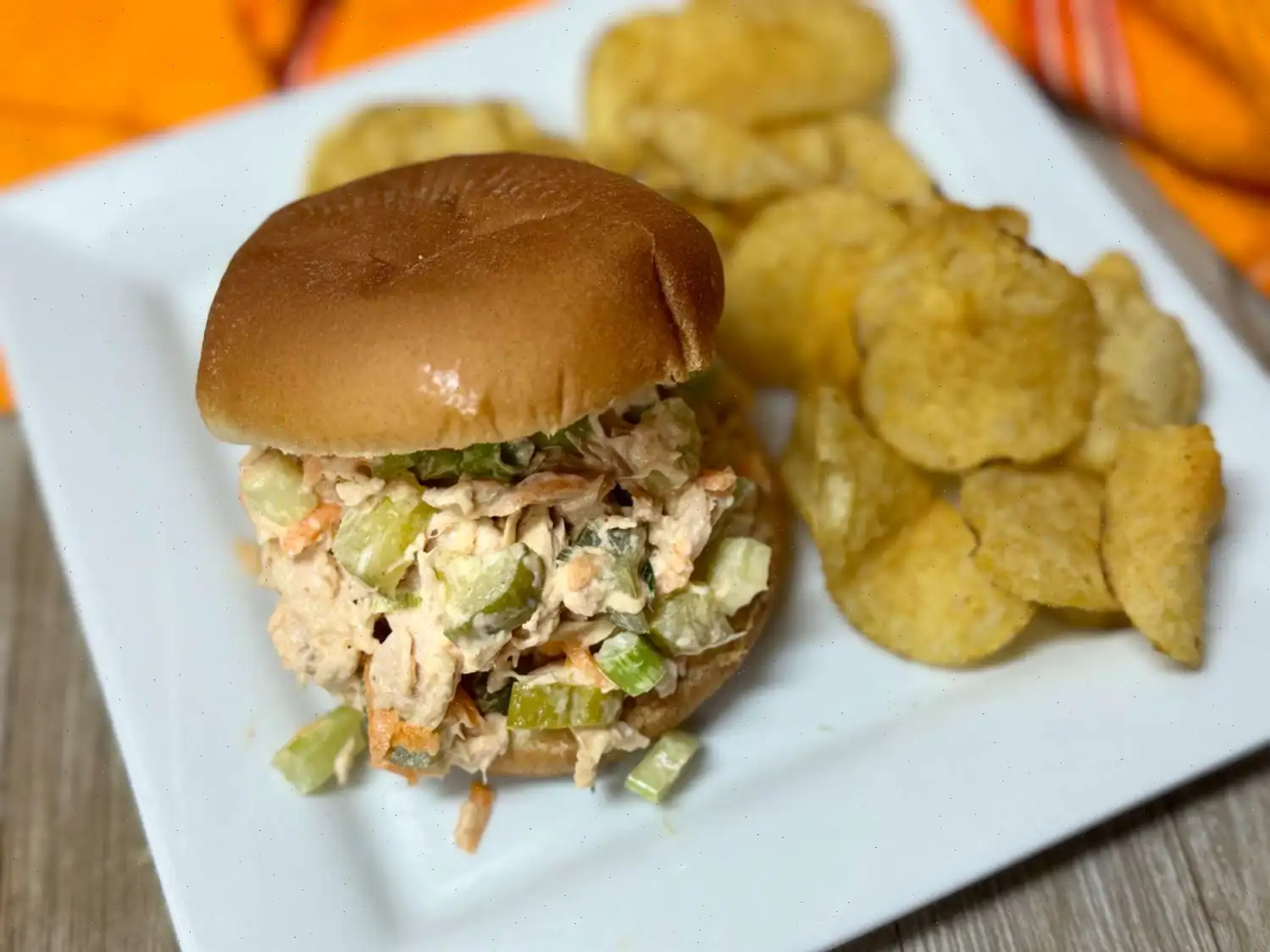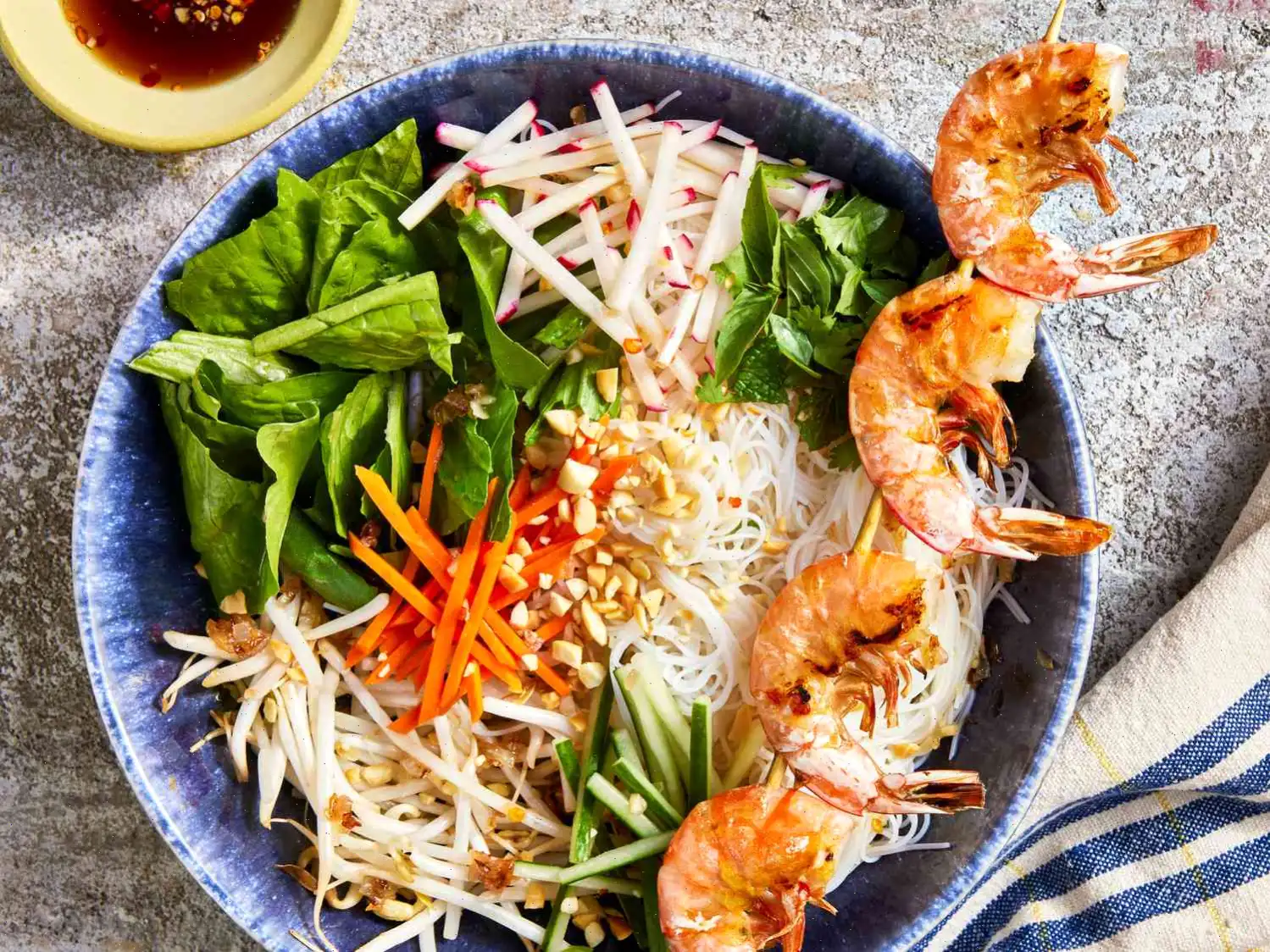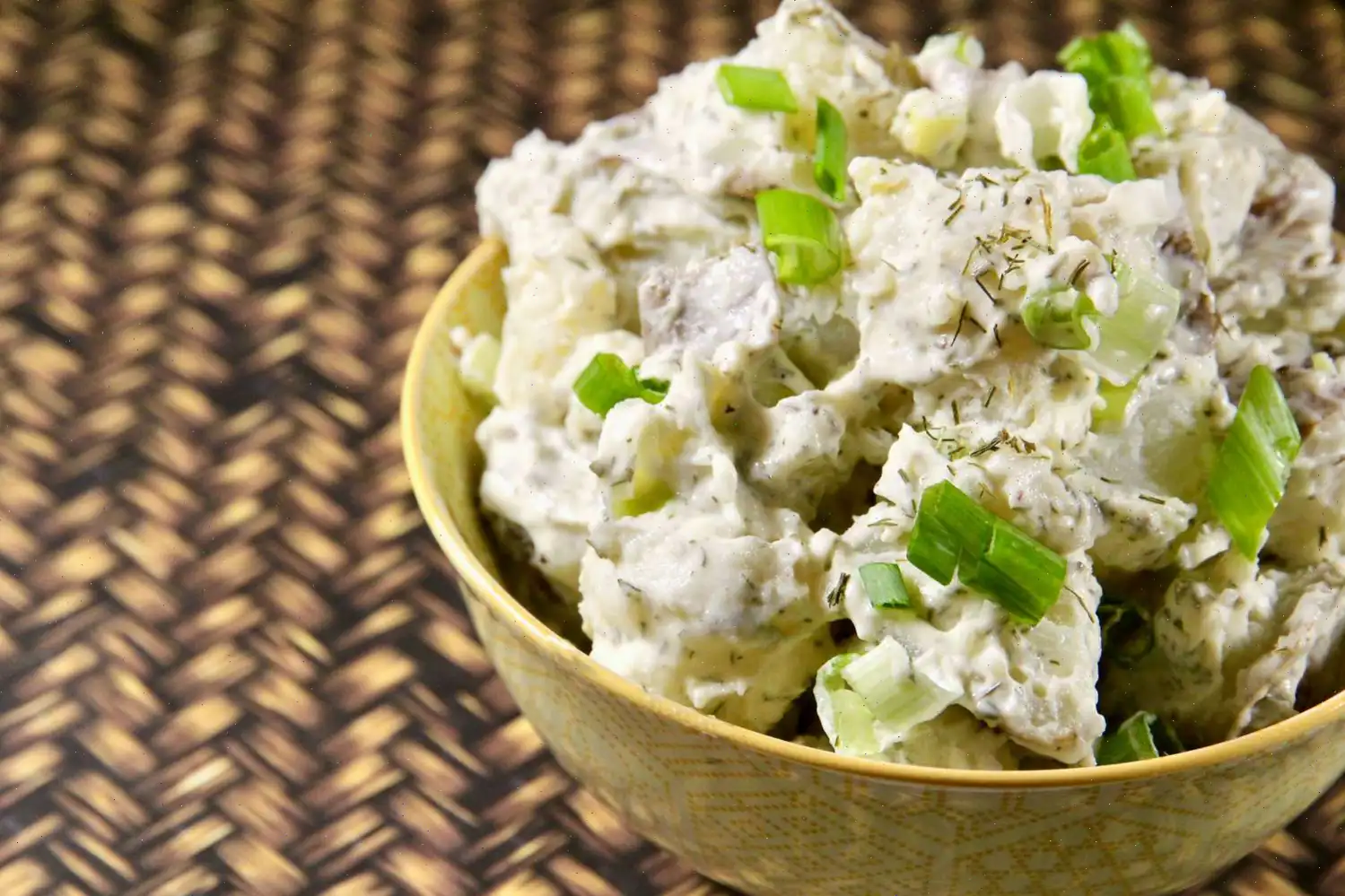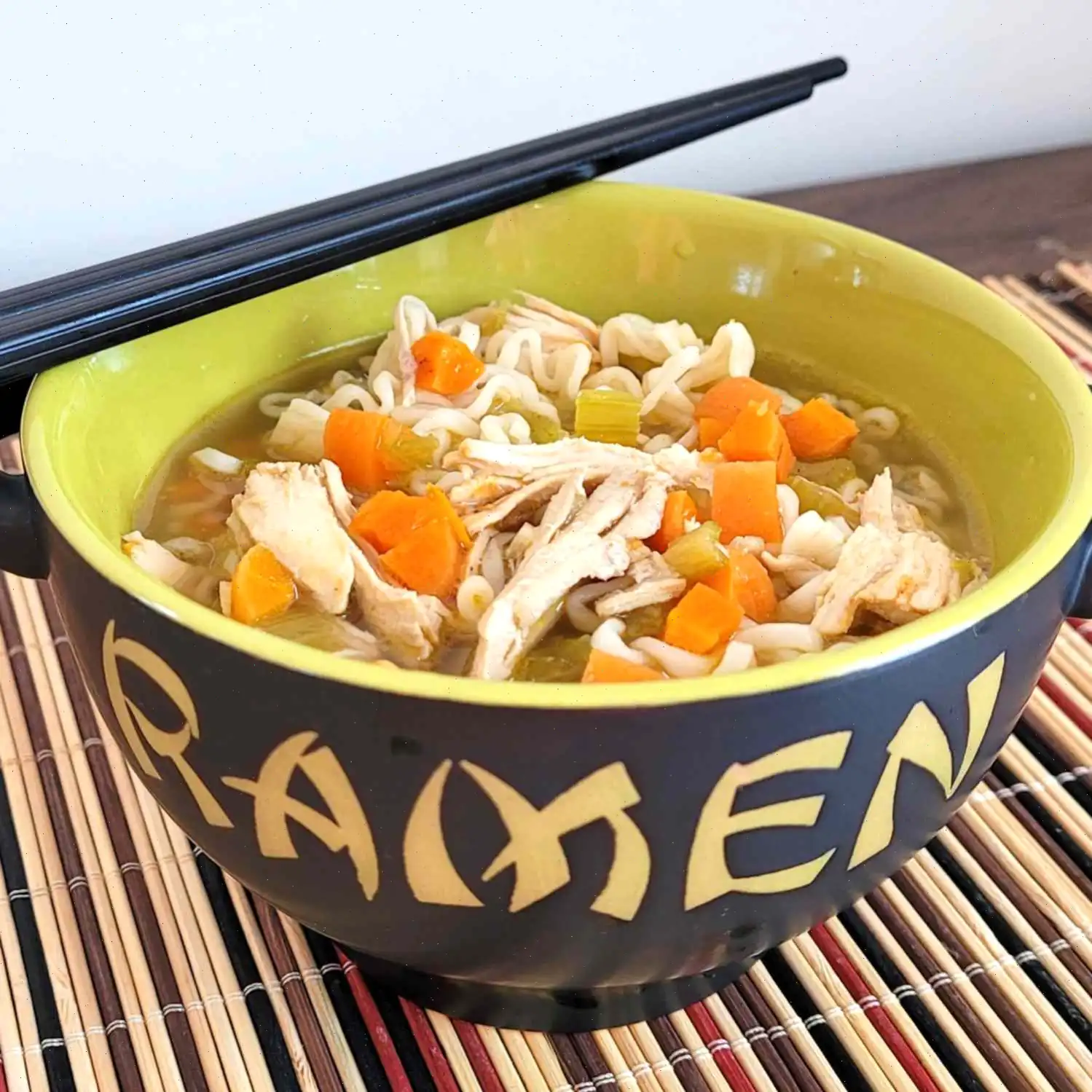
Avocado Caprese Salad Recipe
Recipe
This recipe yields 2 servings.
Ingredients
- 1/2 cup miniature fresh mozzarella balls, or "pearls," drained
- 1/2 cup cherry tomatoes, halved
- 1/2 avocado, pitted, peeled, and chopped
- 5 fresh basil leaves, or to taste, plus more for garnish (optional)
- 1 tablespoon good quality balsamic vinegar
- 2 tablespoons extra-virgin olive oil
- Salt and freshly ground black pepper, to taste
Directions
- Step 1: In a small bowl, combine the mozzarella balls, halved cherry tomatoes, and chopped avocado.
- Step 2: Tear the basil leaves into smaller pieces and scatter them over the other ingredients.
- Step 3: Drizzle the balsamic vinegar and extra-virgin olive oil over the mixture and toss everything together gently to combine.
- Step 4: Season with salt and freshly ground black pepper to taste.
- Step 5: Divide the mixture into two serving bowls and garnish with extra fresh basil, if desired.
- Step 6: Serve immediately and enjoy!
Nutrition Facts (per serving)
| Nutrition | Amount |
|---|---|
| Calories | 478 |
| Total Fat | 43g (56%) |
| Saturated Fat | 10g (48%) |
| Cholesterol | 27mg (9%) |
| Sodium | 379mg (16%) |
| Total Carbohydrate | 17g (6%) |
| Dietary Fiber | 11g (38%) |
| Total Sugars | 4g |
| Protein | 11g (22%) |
| Vitamin C | 20mg (23%) |
| Calcium | 202mg (16%) |
| Iron | 1mg (7%) |
| Potassium | 860mg (18%) |
* Percent Daily Values are based on a 2,000 calorie diet. Your daily values may be higher or lower depending on your calorie needs. Nutrient information is based on available data for the listed ingredients.
The Origins of Avocado Caprese Salad
The Avocado Caprese Salad is a modern twist on the traditional Italian Caprese, which originates from the Campania region of Italy, particularly the island of Capri. The original Caprese salad features a simple combination of fresh tomatoes, mozzarella cheese, basil, olive oil, and sometimes balsamic vinegar. By adding avocado, this variation introduces a creamy texture and subtle nutty flavor, reflecting global culinary influences while honoring the classic Italian foundation.
Regional Variations
While the traditional Caprese is firmly rooted in southern Italy, the avocado variation has gained popularity in regions where avocados are abundant, such as California, Mexico, and parts of the Mediterranean with access to imported avocados. In these areas, chefs often experiment with heirloom tomatoes, burrata cheese instead of mozzarella, and sometimes a drizzle of citrus-infused olive oil, giving each regional version a distinct flavor profile.
How It Differs from Similar Dishes
Unlike a standard Caprese salad, which is strictly Italian in composition, the avocado version blends the creamy richness of avocado with the lightness of mozzarella and the acidity of tomatoes. This creates a balance of textures that sets it apart from other salads like Greek salad or garden salad. Additionally, the avocado variation is more filling due to its healthy fats, making it suitable as a light main course rather than just a side dish.
Typical Serving Context
Avocado Caprese Salad is often served as a starter in modern Italian restaurants, cafs, or bistros that focus on fresh, seasonal ingredients. It is also popular at casual gatherings, summer lunches, and brunches due to its quick preparation and visually appealing presentation. The vibrant colors of green avocado, red tomatoes, and white mozzarella make it especially favored for festive or al fresco dining experiences.
Interesting Facts
- Adding avocado increases the nutritional value, providing heart-healthy monounsaturated fats, fiber, and essential vitamins.
- Some culinary enthusiasts refer to this dish as a California Caprese because of the local popularity of avocado.
- The combination of creamy avocado and fresh mozzarella allows the salad to pair well with a variety of wines, particularly crisp white wines or light ross.
- Despite its modern twist, the salad still maintains the symbolic Italian colors of the flag through its green, white, and red ingredients.


